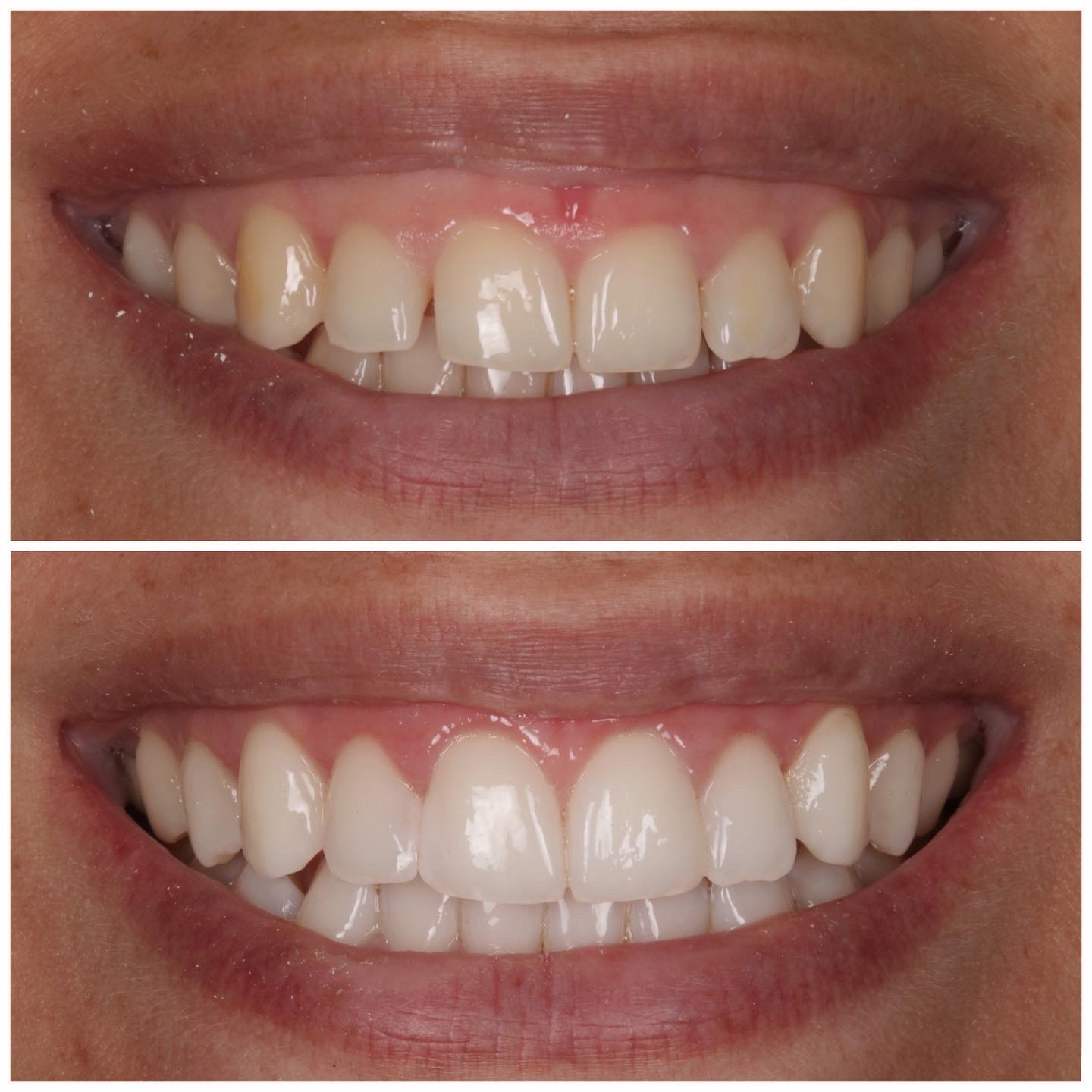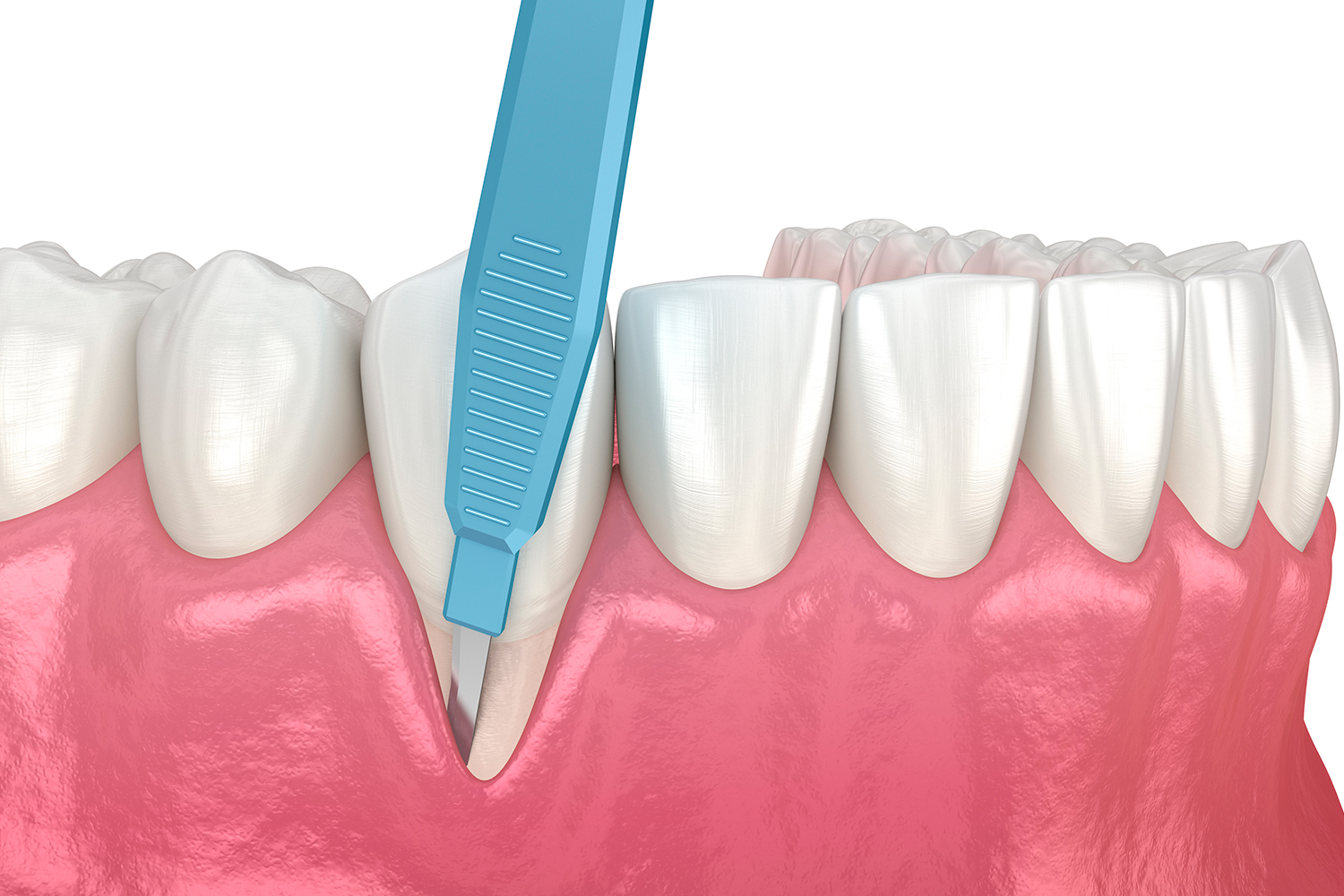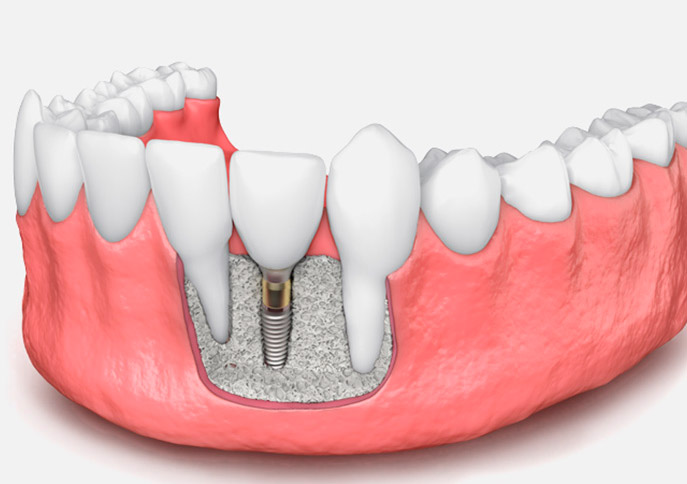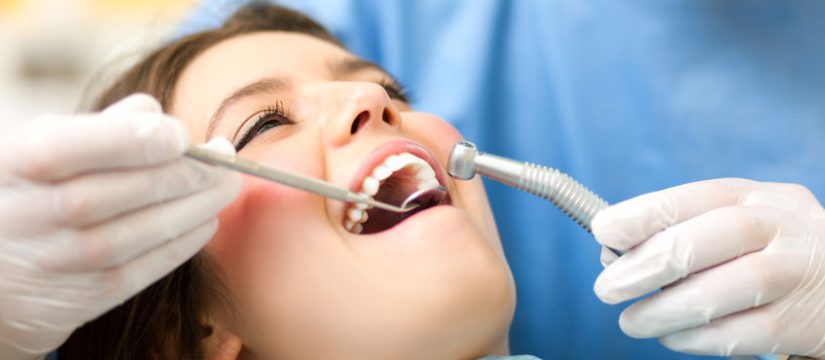SERVICES
What is Periodontics?
Periodontics is a branch of dentistry that specializes in the diagnosis, prevention, and treatment of diseases of the gums and the supporting tissues of the teeth, such as the alveolar bone and the periodontal ligament. The most common periodontal diseases include gingivitis, which is an inflammation of the gums, and periodontitis, which is a more severe condition that affects the tissues supporting the teeth. Periodontists are specialized dentists who focus on the treatment of periodontal diseases and are trained in surgical techniques to address more advanced issues. Periodontal treatments may include professional cleaning of the teeth and gums (prophylaxis), removal of plaque and calculus (tartar removal), periodontal surgery to correct defects in soft tissue or bone, soft tissue or bone grafting to regenerate lost tissues, and dental implant placement to replace teeth lost due to periodontal disease. Periodontal care is crucial for maintaining long-term oral health, as untreated periodontal diseases can lead to tooth loss and impact overall health. Additionally, there is evidence of an association between periodontal diseases and other medical conditions such as heart disease, diabetes, and pregnancy complications. Therefore, prevention and proper treatment of periodontal diseases are essential for oral and general health.

Crown lengthening
Crown lengthening is a dental procedure in which a small amount of gum and bone tissue around a tooth is removed to expose more of the dental crown. Here are some key points about crown lengthening:
Indications: Crown lengthening is performed for various reasons, such as correcting an uneven smile line, improving the appearance of short or worn teeth, facilitating the placement of a dental crown or restoration, or treating periodontal issues such as gum recession.
Procedure: The procedure begins with the administration of local anesthesia to numb the area. Then, the dentist or periodontist uses surgical instruments to carefully remove the gum and bone tissue around the tooth, exposing more of the dental crown. Bone reshaping may also be performed to achieve a desired aesthetic appearance.
Recovery: After the procedure, it is common to experience some discomfort, swelling, and sensitivity in the treated area. Pain relievers or special mouth rinses may be prescribed to help...
Periodontal plastic surgery
Periodontal plastic surgery encompasses a set of surgical procedures aimed at improving the aesthetic appearance of the gums and smile, as well as correcting irregularities in the shape and contour of the gums. Heres an overview of periodontal plastic surgery:
Indications: Periodontal plastic surgery is performed to address a variety of cosmetic issues related to the gums, such as a gummy smile (excessive gum exposure when smiling), uneven or asymmetrical gums, gum recession (receding gums), and unattractive gum shapes.
Common Procedures:
Gingivectomy: Involves surgically removing excess gum tissue to reduce the amount of visible gum and improve the proportion between teeth and gums.
Gingivoplasty: Surgical reshaping of gum tissue to enhance its shape and contour, creating a more aesthetic and symmetrical appearance of the gums.
Soft tissue grafting: Used to correct gum recession by transplanting tissue from the palate or another source to areas where the gums have...


Periodontal regeneration with Enamel matrix protein derivative
Periodontal regeneration with enamel matrix derivative (EMD) is a specialized dental procedure aimed at promoting the regeneration of periodontal tissues, including bone, cementum, and periodontal ligaments, in areas affected by periodontal disease. Heres an overview of periodontal regeneration with EMD:
Indications: Periodontal regeneration with EMD is indicated for patients with moderate to severe periodontal disease, particularly in cases where there is significant loss of periodontal support, such as bone loss and attachment loss. It is commonly used in conjunction with other periodontal treatments, such as scaling and root planing or periodontal flap surgery.
Enamel Matrix Derivative (EMD): EMD is a protein-based material derived from developing porcine or bovine tooth enamel. It contains various growth factors and proteins that stimulate the regeneration of periodontal tissues, including cementum, bone, and periodontal ligaments.
Procedure: The periodontal regeneration...
Guided bone regeneration (bone graft)
Guided bone regeneration, also known as bone grafting, is a dental procedure used to promote the growth of new bone tissue in areas where significant bone loss has occurred, either due to periodontal disease, tooth extraction, trauma, or other causes. Heres an overview of guided bone regeneration:
Indications: Guided bone regeneration is performed in patients who have moderate to severe bone loss and require restoration of bone volume and density to improve the stability of natural teeth or prepare the site for dental implant placement.
Procedure: The guided bone regeneration procedure involves the following steps:
Site preparation: Careful cleaning and preparation of the affected area are performed to remove infected or damaged tissue, as well as any remaining bone or soft tissue debris that may interfere with the regeneration process.
Application of bone graft material: Bone graft material is placed in the area being treated to provide a scaffold or structural support...


Open flap debridement (periodontal surgery to correct periodontal disease)
Periodontal surgery, also known as periodontal flap surgery or gum surgery, is a type of dental procedure performed to treat advanced gum disease (periodontitis) and restore the health and function of the gums and supporting structures of the teeth. Heres an overview of periodontal surgery:
Indications: Periodontal surgery is indicated for patients with moderate to severe gum disease who have not responded to non-surgical treatments such as scaling and root planing (deep cleaning). It is often recommended when there is significant pocket depth, gum recession, bone loss, or other signs of advanced periodontal disease.
Procedure: The periodontal surgery procedure typically involves the following steps:
Anesthesia: Local anesthesia is administered to numb the treatment area and ensure patient comfort during the procedure. In some cases, sedation dentistry may also be used to help relax the patient.
Incision: The periodontist makes small incisions in the gum tissue to access...
“Gummy Smile” correction
Smile correction is a broad term encompassing various dental and orthodontic procedures designed to enhance the aesthetics and function of the smile. These procedures can address a wide range of dental and smile-related issues, such as crooked teeth, crowding, gaps between teeth, malocclusions, discolored or worn teeth, and other aspects affecting oral health and appearance. Heres an overview of some common treatments used for smile correction:
Orthodontics: Orthodontic treatments, such as traditional braces, clear aligners (e.g., Invisalign), ceramic braces, and other orthodontic appliances, are used to correct tooth alignment and bite issues. These treatments can straighten crooked teeth, correct crowding, and close gaps between teeth to achieve a more aligned and harmonious smile.
Teeth Whitening: Teeth whitening is a cosmetic procedure used to lighten and brighten stained or discolored teeth. It can be performed in the dental office or at home using teeth whitening kits...


Gum graft surgery
Gum graft surgery, also known as gum tissue grafting or gingival grafting, is a dental procedure used to treat gum recession and improve the health and appearance of the gums. Heres an overview of gum graft surgery:
Indications: Gum graft surgery is indicated for patients with gum recession, where the gum tissue has pulled away from the teeth, exposing the tooth roots. Gum recession can lead to tooth sensitivity, increased risk of decay, and aesthetic concerns. Gum grafting is performed to cover exposed tooth roots and restore gum tissue.
Procedure: The gum graft surgery procedure typically involves the following steps:
Preparation: The treatment area is numbed with local anesthesia to ensure the patients comfort during the procedure.
Graft Harvesting: There are different types of gum grafts, including connective tissue grafts, free gingival grafts, and pedicle grafts. The periodontist selects the appropriate graft type based on the patients needs. The graft tissue may be...
Deep Cleaning (scaling and root planning)
Deep cleaning, also known as scaling and root planing, is a non-surgical dental procedure performed to treat periodontal disease and improve gum health. Heres an overview of deep cleaning:
Indications: Deep cleaning is recommended for patients with periodontal disease, characterized by the presence of deep gum pockets, gum inflammation (gingivitis), gum recession, and bone loss around the teeth. It is typically performed when routine dental cleanings (prophylaxis) are insufficient to address the extent of gum disease.
Procedure: Deep cleaning involves two main steps: scaling and root planing.
Scaling: The dental professional uses specialized instruments to remove plaque, tartar (calculus), and bacteria from the tooth surfaces, including below the gumline. This process helps eliminate the buildup of harmful substances that contribute to gum inflammation and infection.
Root planing: After scaling, the root surfaces of the teeth are smoothed (planed) to remove rough spots and...

Contact us to get the service of Periodontics
Complete the form to contact our company so we can provide you with specialized attention for the service of Periodontics.

Post-Surgery Manual
This manual tells us about the care that we must carry out after periodontal surgery.
